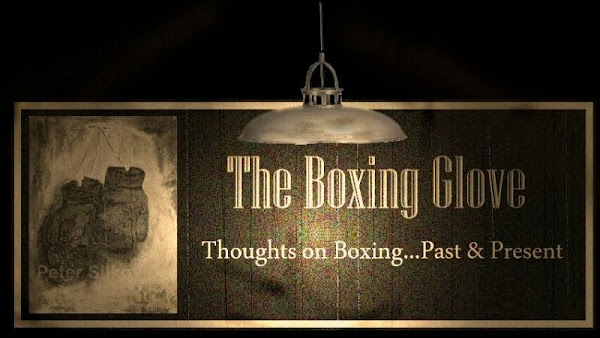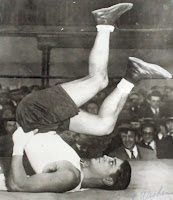By Stephen Donatelli
On Saturday Night, 'Vicious' Victor Ortiz and 'The Beast' Andre Berto will once again scrap, and hopefully give us, appreciative boxing fans, another epic encounter that claimed the lofty 2011 Award for "Fight of the Year!" Back then, both boxers had promising careers and now in '2016,' this is basically a must-win battle if either Pugilist wants to stay on a path to regaining respected status in the deeply talented 'Welterweight' division.
On Saturday Night, 'Vicious' Victor Ortiz and 'The Beast' Andre Berto will once again scrap, and hopefully give us, appreciative boxing fans, another epic encounter that claimed the lofty 2011 Award for "Fight of the Year!" Back then, both boxers had promising careers and now in '2016,' this is basically a must-win battle if either Pugilist wants to stay on a path to regaining respected status in the deeply talented 'Welterweight' division.
"This guy doesn't even deserve a re-match, I just want to show him I can whip him again," stated the confident Ortiz.
Things even got heated at the last press conference when Berto pushed Ortiz as the stare-down was taking place. The one problem that might happen in this encounter, is the first fight between them was so spectacular, this can easily be a deflated let down. However, I'm a firm believer in styles make fights, and anything close to their first back alley slug-fest, will suite the viewers quite well.
Therefore, I really think this fight will, at the very least, be thrilling.
In his last bout, 'The Beast' found out, the hard way, just how hard it is to land on a 'Defensive Guru', like his fight with Floyd 'Money' Mayweather Jr., which was billed as Floyd's retirement fight. While watching the contest, it was hard to give anymore than two rounds to the scrappy, but way overwhelmed Berto. The lackluster fight went the distance, as pretty much expected.
However, it's hard to judge how much Berto has left, because Mayweather Jr. is so skilled. On the other hand, since his surprising second round collapse against Luis Collazo, Ortiz shook that off by stopping Manuel Perez (TKO 3) and Gilberto Sanchez Leon (TKO 8!)
This is a very tricky fight to predict, but when I broke down tape and observed both boxers as of late, here is what I’ve seen. First off, I think Berto is there to be taken once again by a southpaw with good footwork. He fights from a squared-up stance much of the time, while Ortiz stays on his toes, and has a nice bounce in his movement. Another thing I noticed from the first fight, or when Berto takes a hard shot not expected, he sort of half-shuts down and goes into a cautious shell until he figures out what happened. In short, he doesn’t like the unexpected and responds poorly to it. If Berto finds his efforts to puzzle-out the southpaw stymied, he will probably slink into that shell, and give away rounds to Ortiz. What Andre obviously needs to do is get back to his 'bread & butter' & drill his main punch, which is his straight right (preferably a right-left uppercut combo) and try his best, but he won’t be able to employ it as he should.
I see the slight underdog, "Vicious" Victor Ortiz, fighting with that built up rage, and also feel he's the fresher boxer of the two. Berto will come to fight and Ortiz might suffer a flash knockdown that he brilliantly shakes off. In the end, Berto's porous defense, and inability to cut the ring off effectively, will cost him dearly as Ortiz claims a TKO in the 10th Round.
Therefore, I really think this fight will, at the very least, be thrilling.
In his last bout, 'The Beast' found out, the hard way, just how hard it is to land on a 'Defensive Guru', like his fight with Floyd 'Money' Mayweather Jr., which was billed as Floyd's retirement fight. While watching the contest, it was hard to give anymore than two rounds to the scrappy, but way overwhelmed Berto. The lackluster fight went the distance, as pretty much expected.
However, it's hard to judge how much Berto has left, because Mayweather Jr. is so skilled. On the other hand, since his surprising second round collapse against Luis Collazo, Ortiz shook that off by stopping Manuel Perez (TKO 3) and Gilberto Sanchez Leon (TKO 8!)
This is a very tricky fight to predict, but when I broke down tape and observed both boxers as of late, here is what I’ve seen. First off, I think Berto is there to be taken once again by a southpaw with good footwork. He fights from a squared-up stance much of the time, while Ortiz stays on his toes, and has a nice bounce in his movement. Another thing I noticed from the first fight, or when Berto takes a hard shot not expected, he sort of half-shuts down and goes into a cautious shell until he figures out what happened. In short, he doesn’t like the unexpected and responds poorly to it. If Berto finds his efforts to puzzle-out the southpaw stymied, he will probably slink into that shell, and give away rounds to Ortiz. What Andre obviously needs to do is get back to his 'bread & butter' & drill his main punch, which is his straight right (preferably a right-left uppercut combo) and try his best, but he won’t be able to employ it as he should.
I see the slight underdog, "Vicious" Victor Ortiz, fighting with that built up rage, and also feel he's the fresher boxer of the two. Berto will come to fight and Ortiz might suffer a flash knockdown that he brilliantly shakes off. In the end, Berto's porous defense, and inability to cut the ring off effectively, will cost him dearly as Ortiz claims a TKO in the 10th Round.
Copyright © 2016 The Boxing Glove, Inc. Peter Silkov Art. All Rights Reserved. Peter Silkov contributes to
www.theboxingglove.com
#BertoOrtiz #OnThisDay #BoxingHistory #BoxingNews #TheBoxingGlove #TheBoxingGloveNews #BornOnThisDay #Boxing #Boxeo







































